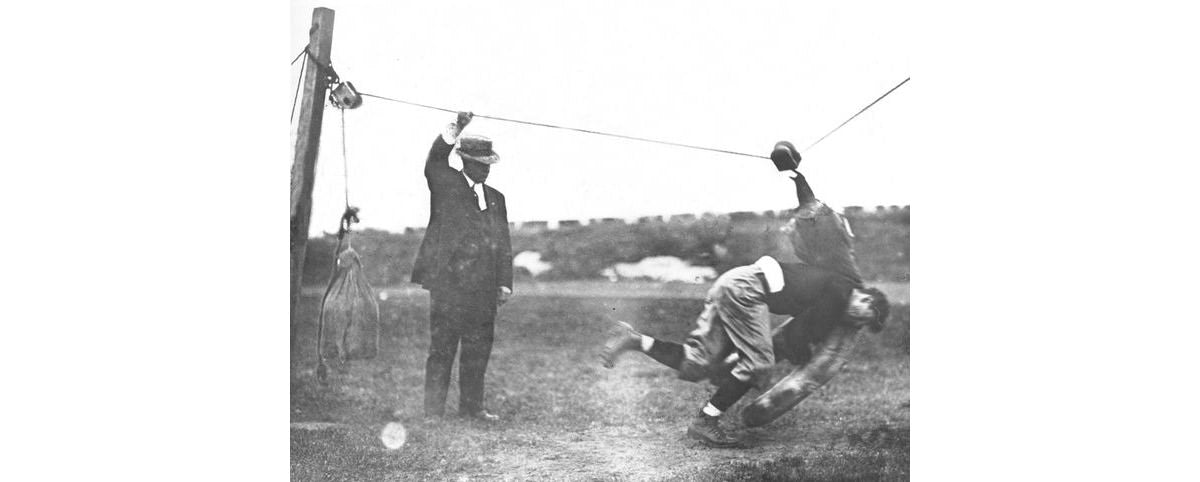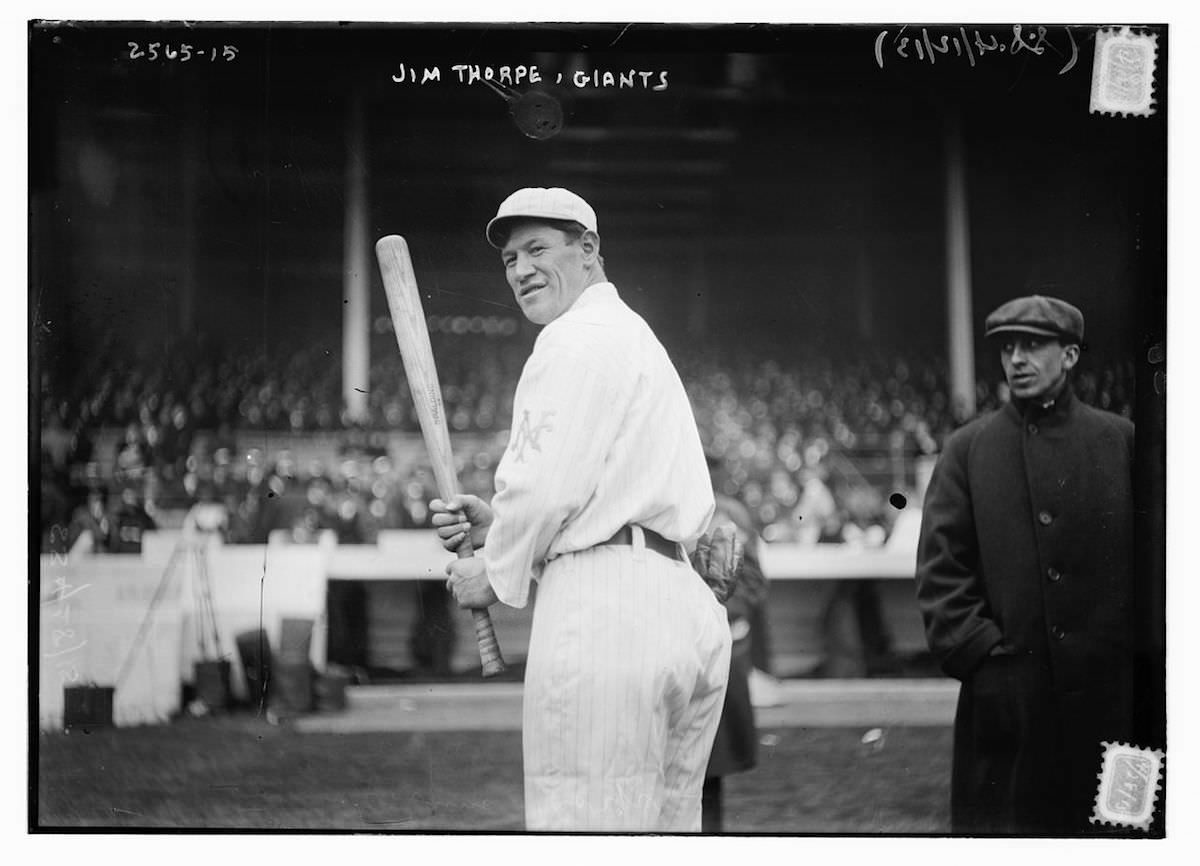
“You, sir, are the greatest athlete in the world”
By Malcolm Pascotti
At the closing ceremony of the 1912 Olympics in Stockholm, as customary at the time, the medals were presented to the athletes. One American was to receive two gold medals for victories in the decathlon and pentathlon. When King Gustav of Sweden awarded these medals he stopped to congratulate the champion and say, “You, sir, are the greatest athlete in the world.” The champion was none other than Jim Thorpe.
Throwing around the "Best Athlete Of All Time" title is not done casually or without heated debate. It's hard to argue against the likes of a Bo Jackson, Deion Sanders, or even Michael Jordan (assuming you forget his baseball career). Though these all-time greats were exceptionally accomplished in their respective sports, their success extended little beyond a single sport. Even the rare two-sport athletes show more promise in one over the other. Today, you might find a standout college athlete competing in multiple sports, but it’s clearly an extension of their specific skill set. For example, a fast wide receiver who can make the easy shift to sprinting on the track.
But imagine an athlete big enough to set blocks on the football field, fast enough to sprint a world-class 100-meter dash, run a 4:35 mile, and bat a career .252 in the big leagues. That athlete was a 6-foot-1, 220-pound member of the Sac and Fox Native American tribe by the name of James Francis Thorpe.
A true athlete isn’t great simply because of practice or coaching, they are great because they have a raw ability that no amount of training can replicate. While raw athleticism is sometimes overshadowed in the age of blockbuster contracts, footwear deals, endless analytics and elite youth teams, the era of Jim Thorpe was a perfect time for a natural athlete to shine, with countless small-market teams and organizations competing regionally with more emphasis on amateurism.

Thorpe was a champion ballroom dancer who could do this to a tackle dummy
The gridiron, the diamond, the track… the dance floor
A great athlete has to have great footwork. Be it boxing, badminton, or baseball, it all comes from the legs up. Thorpe was no exception to this rule. In fact, while attending college at Carlisle, he won the 1912 intercollegiate ballroom dancing championship. That same year, he also competed in collegiate basketball, baseball, football, and lacrosse and faced some great competitors. He played football against President Dwight Eisenhower that season. It was an interaction that would stick with the president for the rest of his life. In a 1961 speech, Eisenhower remembered, “Here and there, there are some people who are supremely endowed. My memory goes back to Jim Thorpe. He never practiced in his life, and he could do anything better than any other football player I ever saw.”
It’s gotta be the shoes (OK, It's definitely not the shoes)
To put into perspective the total athleticism Jim Thorpe possessed, he won the Decathlon at the 1912 Summer Olympics while wearing two different size shoes. In 1912, Olympic athletes were amateurs who often receiving little or no support financially. Thorpe didn’t exactly have a shoe sponsorship (this was a half century before Nike existed) so when his only pair of track spikes were stolen, he old ones in a nearby trash bin, which happened to be a mismatched pair of shoes that required him to wear several extra socks on one foot. Two different shoes and ten grueling events later, Jim took home the gold in the decathlon.

After winning two gold medals in the 1912 Olympics, Thorpe signed with the New York Giants
In his free time, you know, when he wasn’t winning gold medals…
Outside of track, Jim played professional football, baseball, and basketball. He played 52 games for six NFL teams before retiring at the age of 41. For the 1923 season, he was named to the first ever all-pro team. Though his statistics were never officially documented, legend has it he once booted a wind-assisted 95-yard, game clinching punt, a career-long 47-yard field goal, and several rushing touchdowns in an era when scoring was few and far between. On the baseball diamond, Thorpe held a respectable .252 career batting average. In his final season, he batted .327.
Jim Thorpe was as pure of an athlete the world has ever seen. His accomplishments were nothing short of historic, but his legend lives longer than the pages of any statbook. His approach was simple: Be an athlete and compete your ass off on every field (or dance floor). No matter the sport, Thorpe set the standard of his time—one to which athletes throughout history will be compared.
Malcolm Pascotti is a writer and photographer. Follow him on Instagram: @sweetteapapi.

